Rodent infestations can be a troubling issue for homeowners, leading to both health concerns and damage to property. Traditional methods of rodent control often involve lethal traps or toxic chemicals that can be harmful to both the environment and other non-target animals.
With growing awareness and concern for animal welfare, many are turning to humane rodent control techniques. These methods prioritize the safe and ethical treatment of the animals, focusing on prevention, exclusion, and non-lethal removal.
By employing a combination of these techniques, individuals can effectively manage rodent problems in their homes without causing unnecessary harm to the animals or the ecosystem.
Key takeaways
- Humane techniques prioritize safe rodent control.
- Understand mouse behavior for effective prevention.
- Ethical methods preserve ecosystem balance.
- Identifying signs of infestation is essential for early action.
- Natural deterrents and cleanliness deter mice.
- Live trapping offers humane removal.
- Sealing entry points prevents infestations.
- Responsible waste management denies food sources.
- Sustained efforts ensure long-term prevention.
- Ethical practices benefit ecosystems and coexistence.
Understanding Mouse Behavior
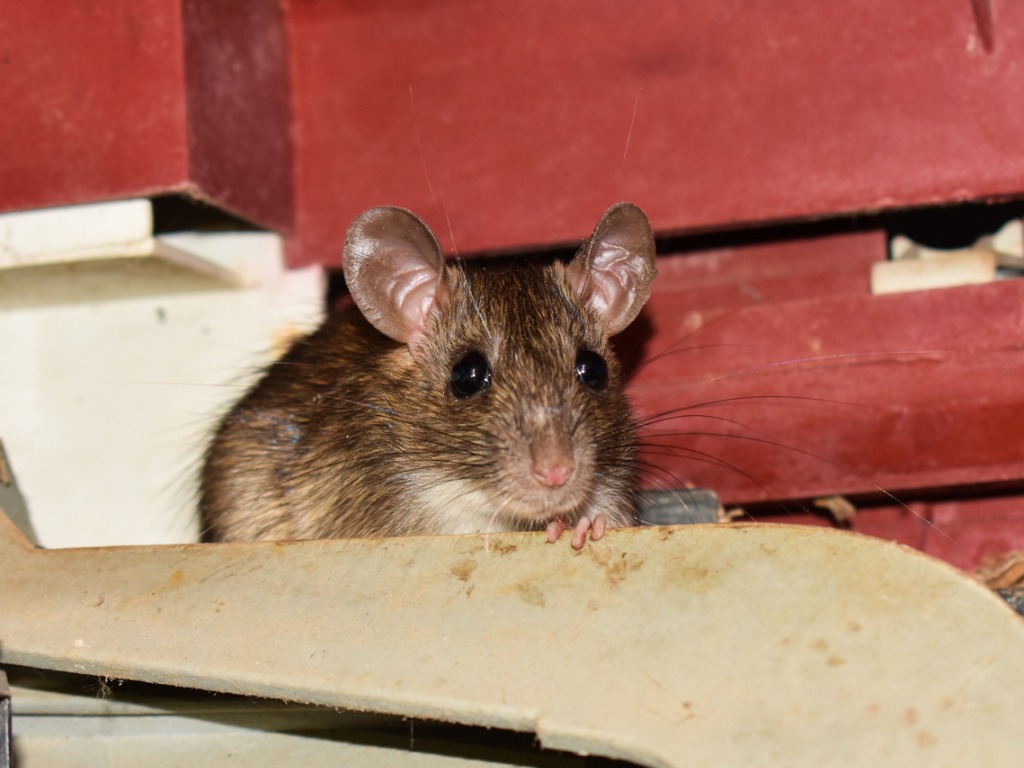
Mice, due to their innate behaviors and habits, are particularly susceptible to infestations that can quickly escalate if left unattended. Understanding these behaviors sheds light on why they are prone to such situations.
Nesting Habits:
Mice are skilled at finding small, concealed spaces for nesting. They often seek out warm, cozy areas that provide protection from predators and the elements. This could include wall voids, attics, crawl spaces, and even furniture.
Their nesting habits make them adept at infiltrating our living spaces without our immediate notice.
Feeding Patterns:
Mice are opportunistic feeders, consuming a wide range of foods. They have a keen sense of smell and can detect even tiny amounts of food residue.
This behavior leads them to scavenge for crumbs and unsealed food items in kitchens, pantries, and other areas where food is stored. Their adaptable diet preferences make it easy for them to thrive in a variety of environments.
Breeding Characteristics:
One of the key factors that contribute to mouse infestations is their rapid breeding rate. A single pair of mice can produce numerous litters in a year, with each litter containing several offspring. The gestation period is short, and mice reach sexual maturity quickly.
This accelerated reproductive cycle allows their population to increase exponentially, making it crucial to address infestations promptly to prevent an uncontrollable surge in their numbers.
Nocturnal Behavior:
Mice are primarily nocturnal creatures, which means they are most active during the night when humans are less likely to detect their presence.
This behavior makes it challenging to identify an infestation in its early stages. By the time their activities become noticeable, the infestation might have already grown significantly.
Curiosity and Exploration:
Mice are naturally curious and agile, allowing them to explore various areas to find food and nesting sites. This behavior often leads them into human living spaces, as they can easily squeeze through small openings and gaps in walls, floors, and foundations.
All these behaviors combined create an environment conducive to infestations. Their ability to quickly adapt to changing conditions, reproduce rapidly, and remain hidden due to their nocturnal nature makes it necessary to take proactive steps for effective and humane rodent control.
By understanding these behaviors, we can develop strategies that address the root causes of infestations and prevent their recurrence.
Importance of Humane Rodent Control
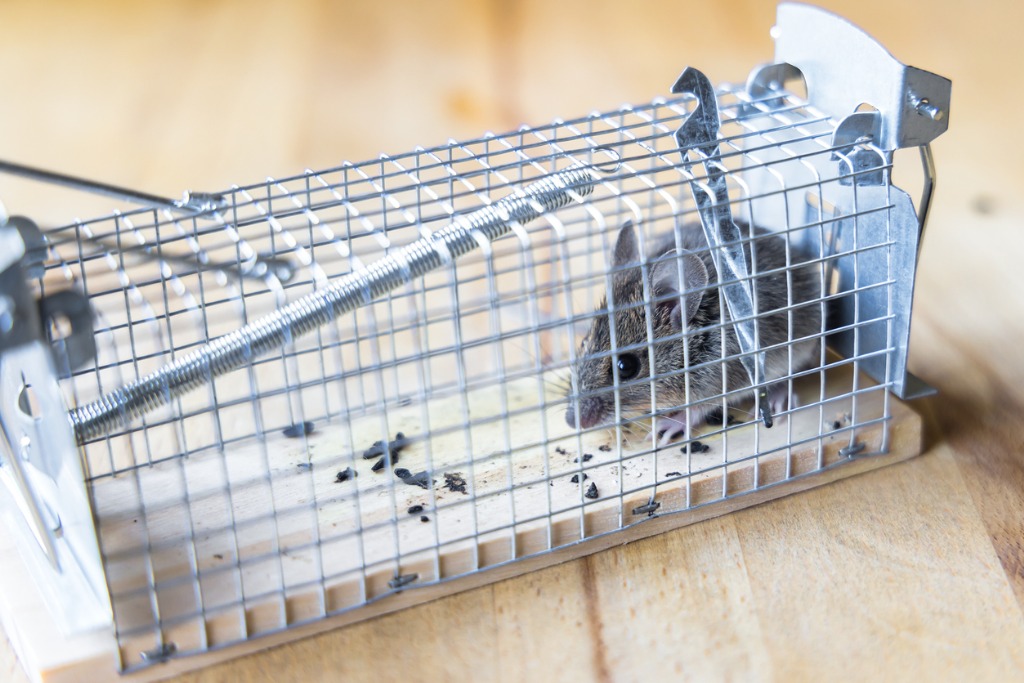
- Ethical Consideration: Opting for humane rodent control methods aligns with a sense of compassion and responsibility towards all living creatures, even those considered pests.
- Ecosystem Balance: Traditional extermination methods can disrupt the delicate balance of ecosystems. Mice serve as a food source for many predators, and their sudden decline can lead to unintended consequences for other species.
- Non-Target Effects: Toxic chemicals and traps used in conventional methods can harm unintended targets, such as pets, birds, and beneficial insects. This collateral damage disrupts the natural biodiversity of the environment.
- Health Concerns: Toxic chemicals pose health risks to humans as well. Exposure to these substances can lead to respiratory issues, allergies, and other health problems, especially in households with children and sensitive individuals.
- Environmental Contamination: The use of poisonous baits can result in environmental contamination, affecting soil, water sources, and vegetation. This contamination can have far-reaching consequences for the entire ecosystem.
- Resistant Strains: Over time, repeated use of traditional methods can lead to the development of resistant rodent populations. This necessitates even stronger chemicals, creating a cycle that is both harmful and ineffective.
- Public Perception: Employing humane methods showcases a commitment to ethical practices, enhancing public perception and community goodwill, particularly in sensitive areas like residential neighborhoods and commercial spaces.
- Long-Term Solutions: Humane rodent control focuses on addressing the root causes of infestations, such as entry points and food sources. This approach provides more sustainable and long-term solutions compared to simply exterminating rodents.
- Educational Value: Choosing humane methods offers educational opportunities to promote coexistence with wildlife and raise awareness about the importance of maintaining a balanced ecosystem.
Humane Rodent Control Techniques
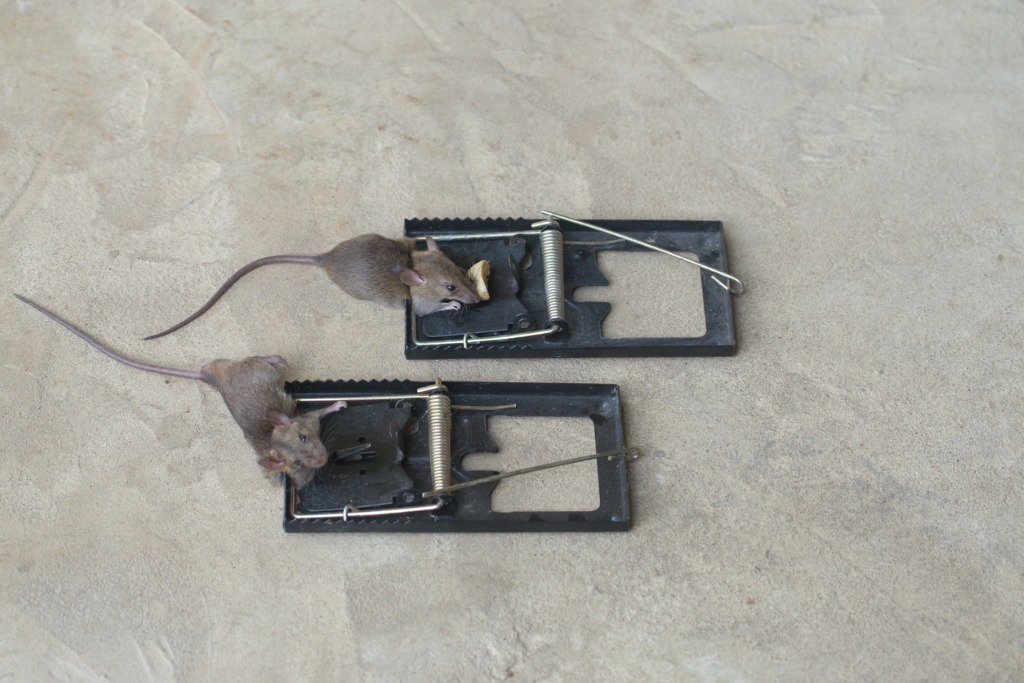
Integrated Pest Management (IPM) is a holistic and ethical approach to managing pest populations, including rodents, while minimizing harm to the environment and non-target species.
IPM combines various strategies to achieve effective control while maintaining ecological balance. One key aspect of IPM is the use of natural deterrents and preventive measures that help repel and discourage rodents without resorting to harmful chemicals or inhumane extermination methods.
Natural Deterrents to Repel Mice
- Peppermint Oil: Mice have a strong sense of smell, and certain scents, like peppermint oil, are known to repel them. Placing cotton balls soaked in peppermint oil in areas prone to infestations can deter mice from entering.
- Cloves: The strong aroma of cloves is another natural deterrent for mice. Placing cloves in strategic locations or using clove essential oil can help discourage mice from entering your living spaces.
- Garlic: Mice dislike the pungent smell of garlic. Placing crushed garlic cloves or garlic oil near potential entry points can act as a barrier to keep them away.
Preventive Measures for Effective Control
- Sealing Entry Points: Mice can squeeze through tiny openings, so it’s crucial to seal all potential entry points in your home, including gaps around doors, windows, pipes, and vents. This prevents their easy access and reduces the likelihood of an infestation.
- Food Storage: Properly store food in airtight containers to eliminate potential food sources for mice. Keep pet food securely stored as well, as it can attract rodents.
- Maintaining Cleanliness: Regularly clean your living spaces to remove crumbs, spills, and clutter that mice might be attracted to. A clean environment reduces the availability of food and nesting materials.
- Remove Clutter: Clutter provides hiding spots for mice. Decluttering your home minimizes their potential hiding places and makes it easier to detect their presence.
- Trim Vegetation: Trim bushes and trees near your home, as overhanging branches can provide mice with a pathway onto your property.
- Use Traps Humanely: If trapping becomes necessary, opt for humane traps that capture mice without harming them. These traps allow you to release the captured mice back into the wild far from your home.
By integrating these humane rodent control techniques into your approach, you can create an environment that is less attractive to mice while promoting coexistence and preserving the balance of the ecosystem.
Embracing IPM and these natural deterrents not only addresses infestations effectively but also upholds our ethical responsibility toward the well-being of all living beings.
Live Trapping and Release
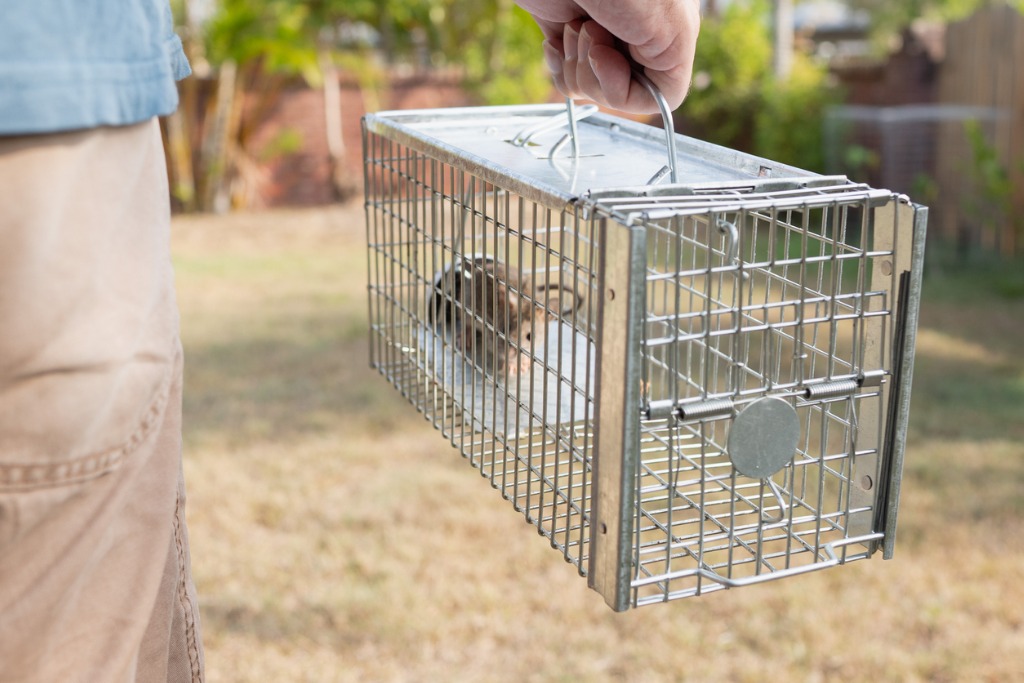
Live traps offer a humane way to capture mice without causing them harm. These traps are designed to safely confine mice until they can be released back into their natural habitat.
Here’s how to effectively use live traps:
- Select Appropriate Traps: Choose live traps that are specifically designed for mice. These traps are typically small, enclosed containers with one-way entry mechanisms.
- Proper Placement: Identify areas with high mouse activity. Common locations include along walls, near entry points, and near food sources. Place traps in these areas, ensuring they are out of reach of pets and children.
- Baiting Traps: Choose bait that mice are attracted to, such as peanut butter, small pieces of cheese, or grains. Place a small amount of bait at the far end of the trap, where the trigger mechanism is located.
- Setting the Trap: Follow the manufacturer’s instructions to set the trap. Most traps have a trigger mechanism that closes the entrance once the mouse enters to access the bait.
- Check Traps Regularly: Check the traps frequently, ideally every few hours. Mice are sensitive to temperature changes and stress, so it’s important to release them promptly.
Proper Placement and Baiting for Effectiveness
- Entry Points: Position traps near potential entry points like gaps under doors or holes in walls. Mice are more likely to encounter and enter the trap as they search for a way inside.
- Along Walls: Mice tend to travel along walls and edges of rooms. Placing traps parallel to walls increases the chances of them encountering the trap.
- Avoid Disturbances: Place traps in quiet areas to avoid scaring mice away. Keep traps away from loud noises, vibrations, or bright lights.
- Use Fresh Bait: Replace bait regularly to maintain its attractiveness. Fresh, aromatic bait is more enticing for mice.
Release Far Away to Prevent Reinfestations
When you’ve successfully captured a mouse, it’s important to release it far away from your home to prevent it from returning and causing reinfestations. Choose a location with suitable habitat and food sources for mice, away from human dwellings.
This could be a wooded area, a field, or a park. Ensure the mouse has a good chance of survival in its new environment.
Live trapping and releasing mice provides a humane way to address infestations and respects the creatures’ right to exist without causing harm.
By following proper trapping and releasing procedures, you can effectively manage mouse populations and minimize the impact of their presence in your living spaces.
Exclusion and Home Repairs
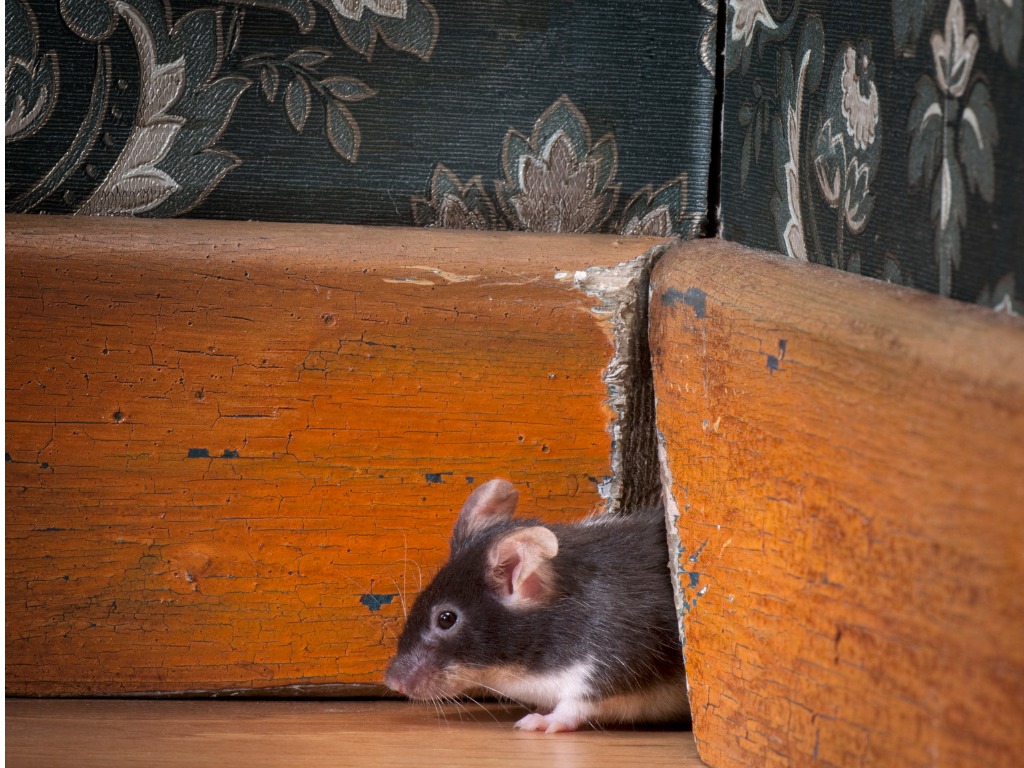
Identifying and sealing potential entry points is a crucial step in preventing mouse infestations. Mice can squeeze through very small openings, so thorough inspection is key.
Here’s a step-by-step guide:
- Visual Inspection: Carefully examine both the interior and exterior of your home. Look for cracks, gaps, holes, and other openings that mice could use to enter.
- Common Entry Points: Pay special attention to areas around doors, windows, utility penetrations (pipes, vents), eaves, foundation, and attic spaces.
- Interior Inspection: Inside your home, check for gaps under doors, holes in walls, and openings around utility connections and vents.
- Exterior Inspection: Outside, inspect the foundation, siding, roof, and soffits for gaps and holes that mice could exploit.
- Sealing Materials: Use appropriate materials to seal gaps. Steel wool, wire mesh, caulking, expanding foam, and weatherstripping are commonly used options.
- DIY Repairs: For small gaps and holes, use steel wool or wire mesh to block the openings. Seal gaps around pipes, wires, and vents with caulking or expanding foam.
- Weather stripping: Install weatherstripping around doors and windows to ensure a tight seal, preventing mice from entering.
- Attic and Crawlspace Inspection: Inspect your attic and crawlspace for potential entry points. Use wire mesh to cover vents and openings.
- Professional Help: If you’re unsure about the extent of the repairs or need assistance, consider hiring a professional pest control or handyman service. They can identify hidden entry points and provide effective solutions.
Common Areas of Entry and DIY Repairs
- Gaps Around Doors and Windows: Install weatherstripping and door sweeps to seal gaps. Apply caulk to seal small openings.
- Foundation Cracks: Fill cracks and gaps in the foundation with mortar or expanding foam.
- Utility Penetrations: Seal gaps around pipes, vents, and wires using caulk or expanding foam.
- Soffits and Eaves: Install wire mesh or steel wool to cover openings in the soffits and eaves.
- Attic and Roof: Check for damaged roof shingles and gaps in the attic. Use wire mesh to cover attic vents.
- Chimney: Install a chimney cap to prevent mice from entering through the chimney.
- Garage: Seal gaps around garage doors and windows. Use weatherstripping to seal gaps at the bottom of garage doors.
- Crawlspaces: Seal openings in crawlspaces with wire mesh and ensure proper ventilation.
Regularly inspect your home for new gaps or openings that may develop over time. Taking proactive measures to seal entry points will not only prevent mouse infestations but also contribute to a more energy-efficient and secure home.
Proper Waste Management
Proper waste management plays a significant role in preventing mouse infestations and maintaining a clean and pest-free living environment. Inadequate waste disposal can attract mice, providing them with a readily available food source and creating an environment conducive to their presence.
To effectively prevent mouse infestations, it’s essential to adopt responsible waste management practices.
Secure Trash Bins and Remove Clutter:
Securing trash bins and removing clutter are crucial steps in preventing mice from being drawn to your property. Here’s how you can accomplish this:
1. Secure Trash Bins:
Ensure that your trash bins have tight-fitting lids that are kept closed at all times. Mice are adept at scavenging for food and open trash bins can be an easy target. Using bins with secure lids helps to keep food odors contained and inaccessible to rodents.
2. Proper Disposal:
Dispose of food waste properly by placing it in sealed plastic bags before placing it in the trash bin. This prevents the release of enticing food odors that could attract mice.
3. Regular Cleaning:
Clean your trash bins regularly to remove any residue or spills that might attract rodents. Use a mild disinfectant to eliminate odors that could entice mice.
4. Keep Outdoor Areas Clean:
Remove any debris or clutter from your yard or outdoor spaces. Piles of leaves, wood, and other items can provide hiding places and nesting materials for mice.
5. Eliminate Standing Water:
Ensure that there are no sources of standing water around your property. Mice need water to survive, and eliminating water sources can discourage them from settling in your vicinity.
6. Store Pet Food Properly:
If you have pets, store their food in airtight containers to prevent it from becoming an attractant for mice.
7. Regular Maintenance:
Regularly inspect your property for signs of potential entry points, cracks, and gaps that mice could exploit. Seal these openings promptly to prevent their access.
Maintaining a Clean Environment
Maintaining a clean environment is paramount in deterring mice from your home. Regular cleaning routines such as sweeping floors, wiping down surfaces, and promptly cleaning up crumbs or spills deny mice access to food sources.
Focus on kitchen and dining areas, where food residue is common. Store food in airtight containers, promptly dispose of trash, and seal potential entry points to minimize hiding spots.
By upholding good hygiene practices, you create an environment that is uninviting to rodents, reducing the likelihood of infestations and promoting a healthier living space.
Long-Term Prevention
Sustaining a mouse-free environment requires consistent effort and vigilance. Regularly inspect and seal entry points, maintain secure trash disposal, and implement proper food storage practices to deter mice. Continuously uphold cleanliness by cleaning up spills, removing clutter, and practicing proper hygiene.
Regularly check traps if used, and maintain outdoor areas to eliminate potential nesting spots. By adhering to these ongoing actions, you ensure a long-term, pest-free living space and minimize the risk of mouse infestations.
Conclusion
Addressing mouse infestations through humane rodent control techniques offers a comprehensive and ethical approach to managing the issue. By understanding mouse behavior, employing natural deterrents, and implementing preventive measures, we can effectively deter mice without causing harm.
Integrated Pest Management (IPM) strategies, including live trapping, proper waste management, and vigilant exclusion, are essential for long-term prevention. Emphasizing ethical practices not only solves immediate problems but also fosters a healthier ecosystem by preserving biodiversity and minimizing the negative impacts of toxic methods.
I encourage readers to embrace these techniques, not only for their effectiveness in managing rodent populations but also for their compassionate and responsible approach to coexisting with wildlife. By adopting these practices, we can create harmonious living spaces that prioritize both human and animal well-being.
Frequently asked questions
Mice are prone to infestations due to their nesting habits, opportunistic feeding patterns, rapid breeding rate, nocturnal behavior, and curiosity. They seek out warm, concealed spaces for nesting, making them adept at infiltrating homes unnoticed. Their adaptable diet preferences and rapid breeding cycle allow their populations to grow quickly. Being primarily active at night makes early detection challenging. Their curiosity and ability to squeeze through small openings further contribute to their infestation potential.
Humane rodent control techniques prioritize safe and ethical treatment of animals, focusing on prevention, exclusion, and non-lethal removal. These methods avoid toxic chemicals and lethal traps that harm the environment and non-target species. Instead, they use natural deterrents, integrated pest management (IPM) strategies, live traps, and home repairs to prevent and manage infestations without causing unnecessary harm.
Ethical consideration is important in rodent control to promote compassion and responsibility toward all living creatures, even those considered pests. Choosing humane methods aligns with a sense of empathy and contributes to a more balanced ecosystem. It also prevents unnecessary suffering of animals and minimizes collateral damage to non-target species.
Integrated Pest Management (IPM) is a holistic approach to managing pest populations while minimizing harm to the environment and non-target species. In rodent control, IPM combines strategies like natural deterrents, preventive measures, proper waste management, exclusion, and live trapping. It focuses on addressing the root causes of infestations and maintaining ecological balance, providing a more sustainable and ethical solution.
Natural deterrents to repel mice include peppermint oil, cloves, and garlic. These scents are known to deter mice due to their strong sense of smell. Placing cotton balls soaked in peppermint oil, using cloves, or placing crushed garlic cloves near potential entry points can discourage mice from entering. These natural options are safe and effective alternatives to toxic chemicals and traditional traps.

